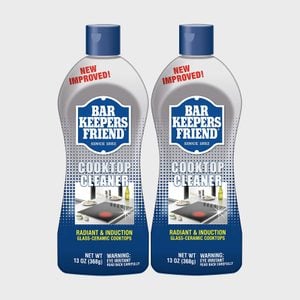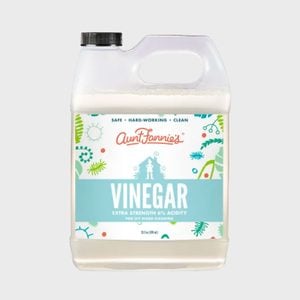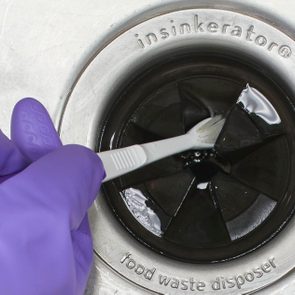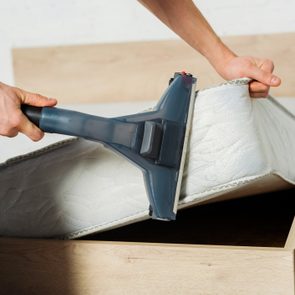How to Clean a Gas Stovetop Quickly and Easily
Updated: Jun. 23, 2024
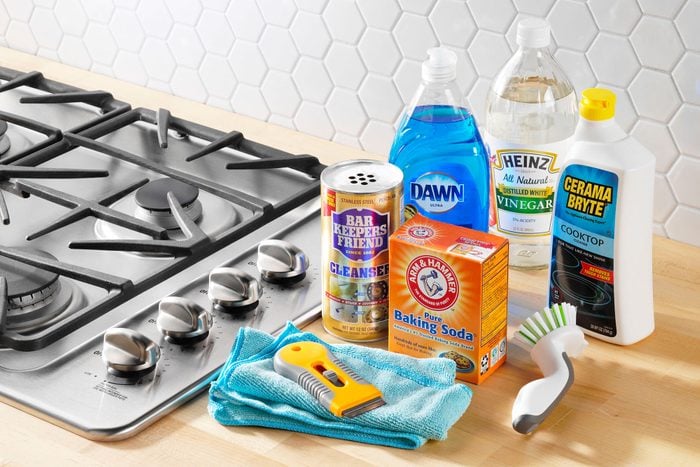
Keep your cooktop shining and stains at bay by learning how to clean a gas stovetop. All it takes are a few simple ingredients and a little elbow grease.
Professional and home chefs everywhere love gas stoves. Gas is inexpensive, and the whoosh of the gas flame gives pinpoint control. You can even roast veggies over an open flame. But all that action means they can get pretty dirty, so it’s important to know how to clean a gas stovetop.
“Keeping a gas stovetop clean is an essential aspect of maintaining your kitchen hygiene,” says Andrii Gurskyi, co-founder of New York City maid service HomeClean. “A dirty stovetop not only looks unappealing but can also impact your cooking.” Old, stuck-on food covering your gas stovetop, grates and burners can smoke—giving your food an off taste—or even start a fire.
Below, Gurskyi walks us through the fundamentals of keeping your gas stove clean. Once you’ve got how to clean a gas stovetop mastered, work it into your cleaning schedule.
Get Reader’s Digest’s Read Up newsletter for more cleaning, humor, travel, tech and fun facts all week long.
On This Page
What is the best way to clean a gas stovetop?
Cleaning your gas stovetop and grates doesn’t have to be a chore if you keep on top of it. Gurskyi says both commercial and natural cleaners work great, depending on your personal preference. “By following these tips and cleaning your gas stovetop regularly,” he says, “you can keep it looking and functioning like new for years to come.”
Let’s get started.
Supplies:
- Dish soap
- Sponge or soft cloth
- Stovetop cleaner, such as Weiman Gas Range Cleaner, Cerama Bryte Cooktop Cleaner and Bar Keepers Friend Cooktop Cleaner
- Soft-bristle brush
- Vinegar and baking soda
- Razor blade scraper
Step 1: Soak grates and burner caps
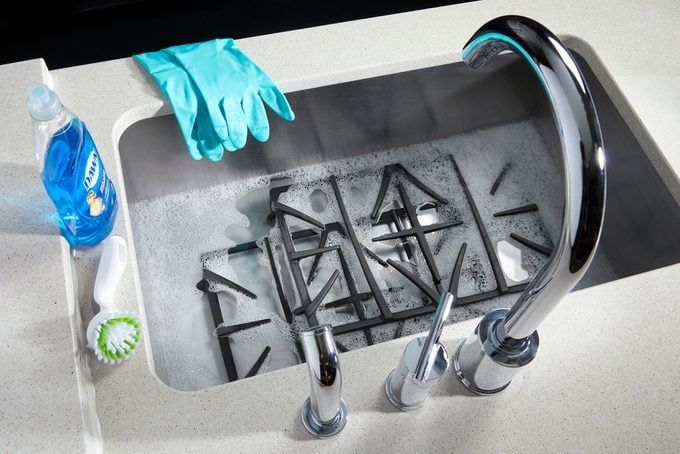
Start by filling your sink with hot, soapy water. Allow the stove to cool completely, then grab the grates and burner caps, and soak them in the sink while you clean the stovetop. (We’ll show you how to clean gas stove grates in a later step.)
Step 2: Apply cleaner
Wipe any loose debris or food particles away with a soft microfiber cloth, and apply your cleaner of choice. Gurskyi says both natural and commercial cleaners work well. When it comes to natural cleaners, he suggests spraying the stovetop with a solution of one part water and one part vinegar or applying dish soap and water using a soft sponge or cloth.
Follow all product directions when using commercial cleaners. “It is essential to read the instructions on the product carefully before using any commercial cleaner,” Gurskyi says. “Make sure the product is safe for use on gas stovetops and follow the instructions for best results.”
Step 3: Scrub the stovetop
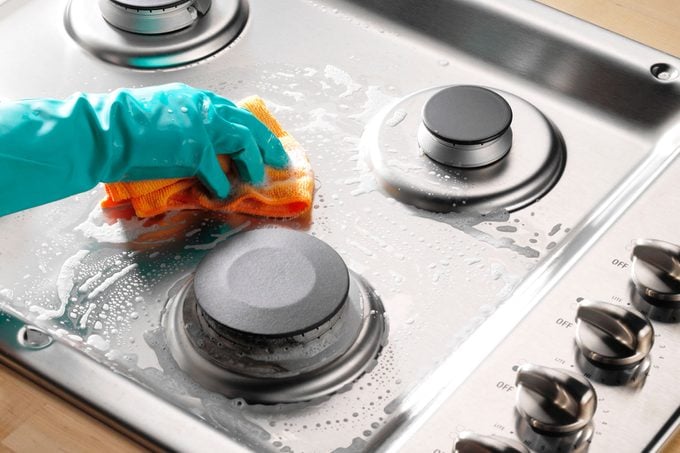
Whether you use natural or commercial cleaners, allow the solution to sit for a few minutes to loosen any dirt or grease. Then use a soft cloth or sponge to gently scrub the surface of the stovetop. Just avoid the scratchy side of the sponge (or use a sponge like Scrub Daddy that doesn’t have an abrasive side)—it could scratch the surface of the stovetop.
For stubborn stains, you can use a razor blade scraper. A far cry from the razors you use to shave or even those made for de-pilling sweaters, razor scrapers are designed for crusted-on food that just won’t budge. Hold the tool at a 45-degree angle and gently scrape the surface of the stovetop. Gently is the operative word here; if you’re not careful, you could scratch or damage the stovetop.
Step 4: Rinse and wipe dry
Rinse the cloth or sponge with clean, fresh water. Wipe down the stovetop to remove the cleaner, periodically rinsing and wringing the cloth or sponge in the sink to remove soapy residue. When all traces of grime and cleaners are gone, dry and buff the stovetop with a soft cloth.
Step 5: Clean grates and burner caps
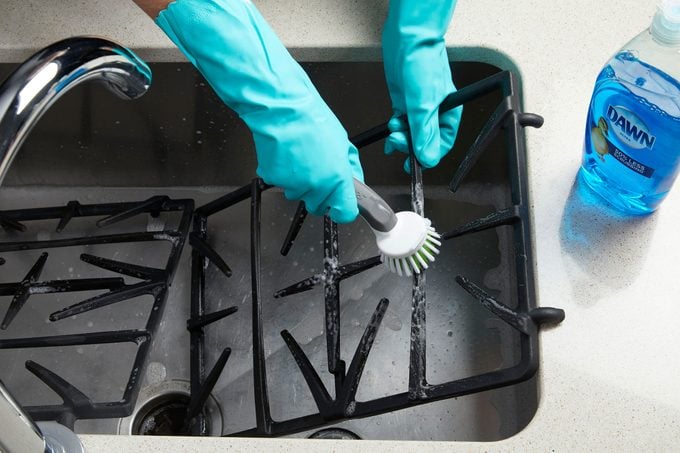
Drain the sink holding your soaking grates and burner caps, then scrub them with a soft brush or cloth to remove stuck-on food. Use the razor blade scraper on the grates if stubborn grime remains, or apply a paste of baking soda and water and scrub. Rinse and dry the grates and burner caps before placing them back on the stove.
Now that your stove’s clean and your sink is empty, learn how to clean a stainless steel sink to get another gleaming appliance.
The best gas stovetop cleaners
How do you keep a gas stovetop clean?
You have the hang of how to clean a gas stovetop, and yours is clean and ready for the next mess. But don’t worry; maintaining your gas stove doesn’t take a lot of work. Most important, according to Gurskyi? Take care of splatters and grease right away.
“If you spill something on your stovetop while cooking, clean it up immediately,” he says. “This prevents the spill from hardening and becoming more difficult to remove later.”
How often should you clean your gas stovetop?
It depends on how often you use it, Gurskyi says. Regular cleaning—especially after each use—prevents food particles from accumulating and stains from setting in. “A well-maintained stovetop can also increase the lifespan of your gas stove,” he says.
So clean regularly. That means daily, if you’re a frequent cook. And even if you don’t use your stove quite as often, you’ll want to give it a wipe-down after each use, just as you clean your countertops after making food. Of course, when you see visible spills or stains, it’s always a good time to clean your gas stovetop.
Sometimes life gets away from us, though, so no matter how often you cook, Gurskyi recommends giving your stovetop—including grates and burners—a good, thorough deep-clean at least once a month.
Pro gas stovetop cleaning tips to keep in mind
While mildly abrasive ingredients like baking soda work great for cleaning a gas stovetop, never use more abrasive tools or harsh chemicals that aren’t meant for stovetops. “This can damage the surface and cause scratches, which can make it harder to clean in the future,” Gurskyi says.
Another pro cleaning tip? “Place protective covers over your gas stovetop when not in use,” Gurskyi says. “This helps prevent scratches, stains and other damage to the surface of your stovetop.”
Sources:
- Andrii Gurskyi, co-founder of HomeClean




















